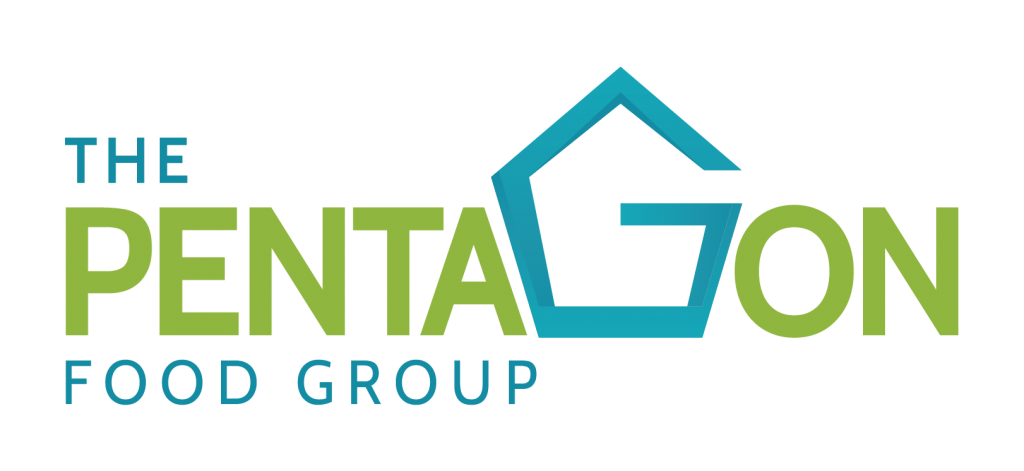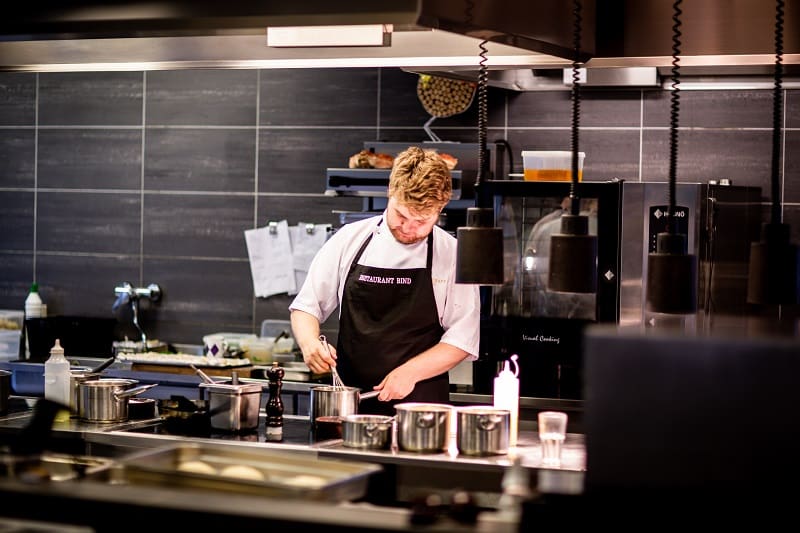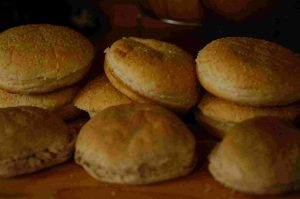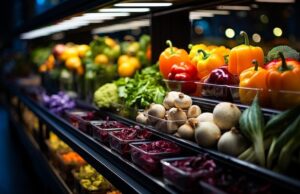If you running or managing a hotel, restaurant or café, know that cleanliness is the key to gain and retain customers. It has been proven by research that the majority of foodborne illnesses are linked to unhygienic food served at restaurants. This means that a clean kitchen can help control the spread of foodborne illnesses.
Also, note that a clean kitchen doesn’t mean regular dusting, mopping, and equipment maintenance. There are many areas of your kitchen that require thorough cleaning on a daily, weekly, bi-weekly, and monthly basis. Luckily, today there are countless kitchen cleaning products available in the market that make even thorough kitchen cleaning a breeze. You just have to pick the right products and you’re good to go.
Need some guidance before you begin? We’ve got you covered with easy solutions and tips for properly cleaning a commercial kitchen with commercial cleaning products.
Commercial Kitchen Cleaning Products
- Degreasers
This kitchen cleaning product is essential for cleaning kitchen surfaces including floors, walls, and equipment. Degreasing your floors and walls in your kitchen space will keep your workers safe in the workspace. Also, it will keep your kitchen smelling and looking great.
When choosing a degreaser, consider whether you want to go for a ready-to-use diluted product or a concentrated solution. Ready to use degreasers are perfectly mixed which speeds up the cleaning process. Concentrated degreasers, on the other hand, allow you to adjust the potency of your cleaning solution. You may also want to consider scented degreasers to eliminate the unpleasant smell of grease in the kitchen. - Descalers and Delimers
Scale build can cause equipment inefficiencies and low flow problems. Descalers and delimers are essential for removing hard water buildup and mineral deposits around your dishwashing area and sink. There are also descaler and delimer products available for cleaning particular areas or equipment of the kitchen, such as coffee machines.
Also, note that it’s never a good idea to mix descalers or delimers with other cleaning products, particularly harsh chemicals such as bleach. Such potent mixtures can damage your kitchen’s equipment, and their fumes could be harmful to your workers. So, leave the mixing to the experts. - Drain Openers and Maintainers
Drains in your kitchen can be easily clogged from grease, food, and hair. By removing clogs and preventing drain blockages you can save hundreds of dollars from plumbing bills. Drain openers and maintainers are designed to remove blockages and keep your drains open.
You can use drain maintainers on a daily basis to prevent drain clogs in the future. Drain maintainers are relatively milder than drain openers. So, while you regularly use them to prevent drain blockage, be sure to use drain openers often as well. - Dishwashing Chemicals
Dishwashing machines usually require detergents or rinse aids to function efficiently. Detergents are available in solid, liquid, phosphate free, and metal safe varieties. Detergents and rinse aids are easy to use and help prevent spotting and grease buildup on tableware. With that, you also need to make sure that your dishwasher is clean. So, make sure you clean your kitchen’s dishwasher bi-weekly or at least once a month to avoid any dirt buildup and to keep it smelling nice. - Sanitizers and Disinfectants
Cleaning your kitchen surfaces water and soap removes visible dirt, but you need to use a sanitizer or disinfectant to ensure the safety of your kitchen space. Look for disinfectants and sanitizers for different areas of your kitchen, including cutting boards, sinks, and restrooms. Also, when using disinfectant spray on countertops, be sure to spray from about 10-12 inches away from the surface and let the space air dry before placing things back on it.
If you need Hygiene Products. Contact Pentagon Food Group for Kitchen Cleaning Products
What Are the Regulations Relating to Kitchen Cleaning Services?
The main regulations relating to kitchen cleaning services are:
- Cleaning services are required to be carried out in all food establishments, including kitchens and canteens.
- The cleaning service provider needs to have at least S$5 million in public liability insurance coverage.
- The cleaning service provider must comply with the code of practice laid down by the National Environment Agency (NEA) in relation to cleaning services.
- The areas that need to be cleaned include the storage area, cooking area and preparation area.
- Cleaning of different areas must be done separately and kept segregated as a practice of good hygiene.
- All utensils used for cleaning purposes should be kept separately from those used for serving food or drinks.
- Cleaning agents should only be used on hard surfaces and never on equipment that is used for the preparation of food, such as food processors or crockery or cutlery items.
- The floors need to be cleaned after every meal period during which they have become soiled with grease or any other foodstuff that may cause slippages or other accidents.
The Environmental Protection Act 1990 is a law that protects the environment and prevents environmental damage caused by any individual or organization. The Workplace (Health, Safety and Welfare) Regulations 1992 states that every workplace should have adequate ventilation, cleanliness, temperature and lighting.
The Personal Protective Equipment at Work Regulations 1992 requires employers to provide personal protective equipment for workers who are exposed to health hazards or safety risks such as falling objects from above. The Control of Substances Hazardous to Health Regulations 1994 (COSHH) is a set of regulations designed to reduce exposure of workers to hazardous substances.
Commercial Kitchen Cleaning Checklists
Commercial kitchens are busy places. At the end of each short-order rush, the cleaning staff has to clean their work area and equipment quickly and thoroughly before getting ready for the next rush. A cleaning checklist ensures that nothing is overlooked in this process. The checklist should be adapted to the size and layout of the kitchen.
- Remove all waste from the cooking area and place it in a trash can with a tight-fitting lid.
- Remove any food wrapping or containers from the cooking area and throw them away.
- Scrape food particles off cutting boards and counter tops; then wash, rinse and sanitize them thoroughly before drying them with towels or air dryers.
- Clean appliances such as refrigerators and freezers by first removing any items stored inside, then wipe down the shelving using a damp cloth or sponge and soapy water, rinse with a clean cloth or sponge soaked in warm water, finally, completely dry all surfaces inside and out with towels or air dryers.
- Mop floors to remove grease, dirt and other debris using warm soapy water, rinse floors with clean water, then allow mopped areas to air dry completely before resuming cooking operations in that.
Creating a Kitchen Cleaning Schedule
The kitchen is the heart of your home, so it’s important to keep it a healthy and happy place. Here are some tips on how often to clean appliances and equipment in your kitchen.
- Refigerator:Wipe down the outside of the fridge every week using soapy water. Clean out the inside at least once a month and more often if necessary; remove all foods, condiments, and other items from the shelves and drawers, wipe down each one with a solution of warm water and mild dishwashing liquid; dry completely before replacing food items.
- Freezer: Every 3 months or when frost builds up
- Microwave: Weekly or after each use if it is heavily soiled. Place a bowl of water inside with 2 tablespoons of white vinegar or lemon juice; heat it on high for about 5 minutes until the solution boils and steam has accumulated inside the oven. Leave the door closed for 10 minutes, then wipe away grime from the interior walls.
- Coffee Maker/Grinder: Weekly if used regularly; follow manufacturer’s instructions for cleaning
- Garbage disposal: Run hot water for several minutes after each use to rinse away food particles. For a thorough cleaning, either run lemon wedges or cubes of ice through it to dislodge any stuck-on food particles or pour in equal parts hot water and white vinegar and let soak for 20 minutes. To keep odors from escaping from the drain, sprinkle 1 teaspoon of baking soda in it once a week; follow with 1 cup of white vinegar and let sit for 10 minutes until foamy (the foaming is caused by the chemical reaction between baking soda and vinegar). Run hot water again to clear the drain of all residue.
- Countertops and Cabinets: Daily, especially if soiled. If you have a stone countertop, check with the manufacturer for specific cleaning instructions. The same is true for wood cabinets.
- Sinks and Faucets: Daily, especially if soiled. Use bleach on white sinks to remove stains. To remove scum from stainless steel sinks, use hot water with a few drops of dishwashing detergent and a soft cloth. Dry completely with a soft cloth to prevent spotting.
- Dishwasher Interior: Monthly near the end of the wash cycle
- Oven (ranges and stovetops): Monthly, more often if needed. Follow manufacturer’s instructions for cleaning (may include self-cleaning feature). Remove knobs before cleaning and replace them when completely dry. Handle grates carefully; they may be heavy and sharp-edged.
- Oven Vent Hoods: Monthly
Commercial Kitchen Cleaning Equipment
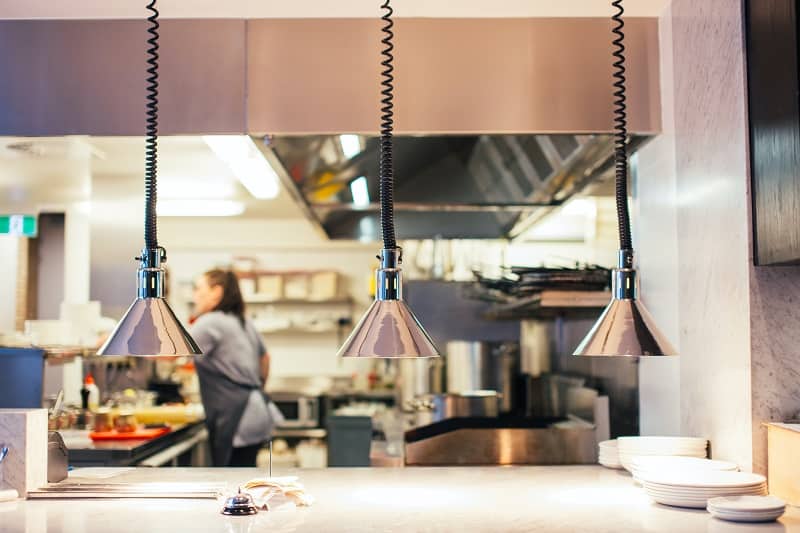
Kitchen Deep cleaning equipment is the top leader in kitchen cleaning industry, with specialty in kitchen deep cleaning and sanitation.
In order to perform a deep cleaning, you need to have the right equipment. You can buy these from a Hygiene Supplier. The equipment listed below is essential for this type of cleaning.
- Bucket
This is obviously the most important item needed for deep cleaning, because you will use it to store all of your cleaning supplies. You should purchase a large bucket that can hold all of your supplies, including a mop and towels. This way, you will have everything you need in one place. - Vacuum Cleaner with Attachments
A vacuum cleaner is necessary for a deep cleaning job because you will use it in almost every room. In order to get into small cracks and crevices, make sure to purchase a vacuum that comes with attachments. You should also be able to adjust the height on this type of vacuum cleaner so you can clean carpets and hardwood floors. - Mop
You will use a mop to clean hardwood floors and tile floors as well as walls. Purchase a mop that has an extendable handle so you do not have to bend over too much when using it. Once again, make sure that your bucket can accommodate this type of mop if possible. - Cleaning Sprays
You will need various types of cleaning sprays for different surfaces and rooms in your kitchen or home.
Cleaning Kitchen Utensils
Cleaning kitchen utensils is an important part of kitchen cleaning because it directly affects the quality of food.
So what do you need to pay attention to when cleaning cooking utensils?
- Cleaning of Stainless Steel Products
Aluminum products are cleaned with a neutral detergent and then rinsed with clean water and wiped dry. If there are grease spots, you can use a special cleanser for cleaning. After processing, use clean water and soft cloth or sponge to wipe off excess detergent or dirt on the surface. - Cleaning of Aluminum Products
Aluminum products are cleaned with a neutral detergent and then rinsed with clean water and wiped dry. If there are grease spots, you can use a special cleanser for cleaning. After processing, use clean water and soft cloth or sponge to wipe off excess detergent or dirt on the surface. - Cleaning of Copper Products
Copper ware should be cleaned with a neutral detergent; after wiping it off with hot water, it should be polished with a soft cloth until it is bright as new; if it is not used often, it should be coated with oil to prevent oxidation discoloration; if there is any green black spot on the surface.
Conclusion
Your kitchen is the heart of your restaurant, and presentation, food quality, and efficiency are all critical components that stem from keeping a clean commercial kitchen. However, professional cleaning must be done by experienced professionals because the equipment and inspection is different from residential cleaning. You may save yourself time by doing some of the initial scrubbing, but it’s always better to let someone who knows how deep down in the grime your kitchen actually gets get to work for you.
For most restaurants and fast-food chains, the cleaning of their kitchen will be a daunting and expensive task. Thankfully they can rely on cleaning services to help them with their kitchen and restaurant cleaning needs. They are great at what they do and are able to effectively clean both small and large kitchens. But how do they do this? Do they use magic? Nope, that is not the case. They utilize expertly created products that help them to make everything a whole lot easier for them and for those who hire them.
Are you looking for a Free Consultation for Food Services Distribution? Click Here!
